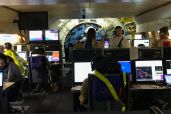The SETI Institute’s NASA Airborne Astronomy Ambassadors 2018 season continued with its second flight week...
The SETI Institute’s NASA Airborne Astronomy Ambassadors (AAA) 2018 season continued with its second flight week, with flights on September 26 and 27. Lexi Kunz and Sharla Short, Vista High School District, Vista, CA with Ron Wou, East Side Union High School District, San Jose, CA, were on board NASA's Stratospheric Observatory for Infrared Astronomy (SOFIA) for two flights. David Forester and Peter Renders, also from Vista District, joined the group for the flight on the 27th.

The teachers’ visits were facilitated by AAA program and SETI Institute a staff members Pamela Harman and Coral Clark. As part of the program, the AAAs completed their professional development webinars, online course, and in-person workshops in preparation for flight week.
Once everyone arrives in Palmdale, CA, for flight week, there’s a lot that has to happen before takeoff. After the badging process and egress training (which is much more in-depth than the safety demos so many people ignore on commercial flights), they had a chance to watch SOFIA take-off, raising their excitement levels. Tours of the SOFIA Science Instrument Lab and Mirror Coating Facility and a meeting with the NASA SOFIA Program manager Eddie Zavala provided insight into the observatory’s science, technology, and management. Detailed instruction regarding the High-resolution Airborne Wideband Camera-Plus (HAWC+) and telescope was delivered by SOFIA staff and guest observers onboard the flights.
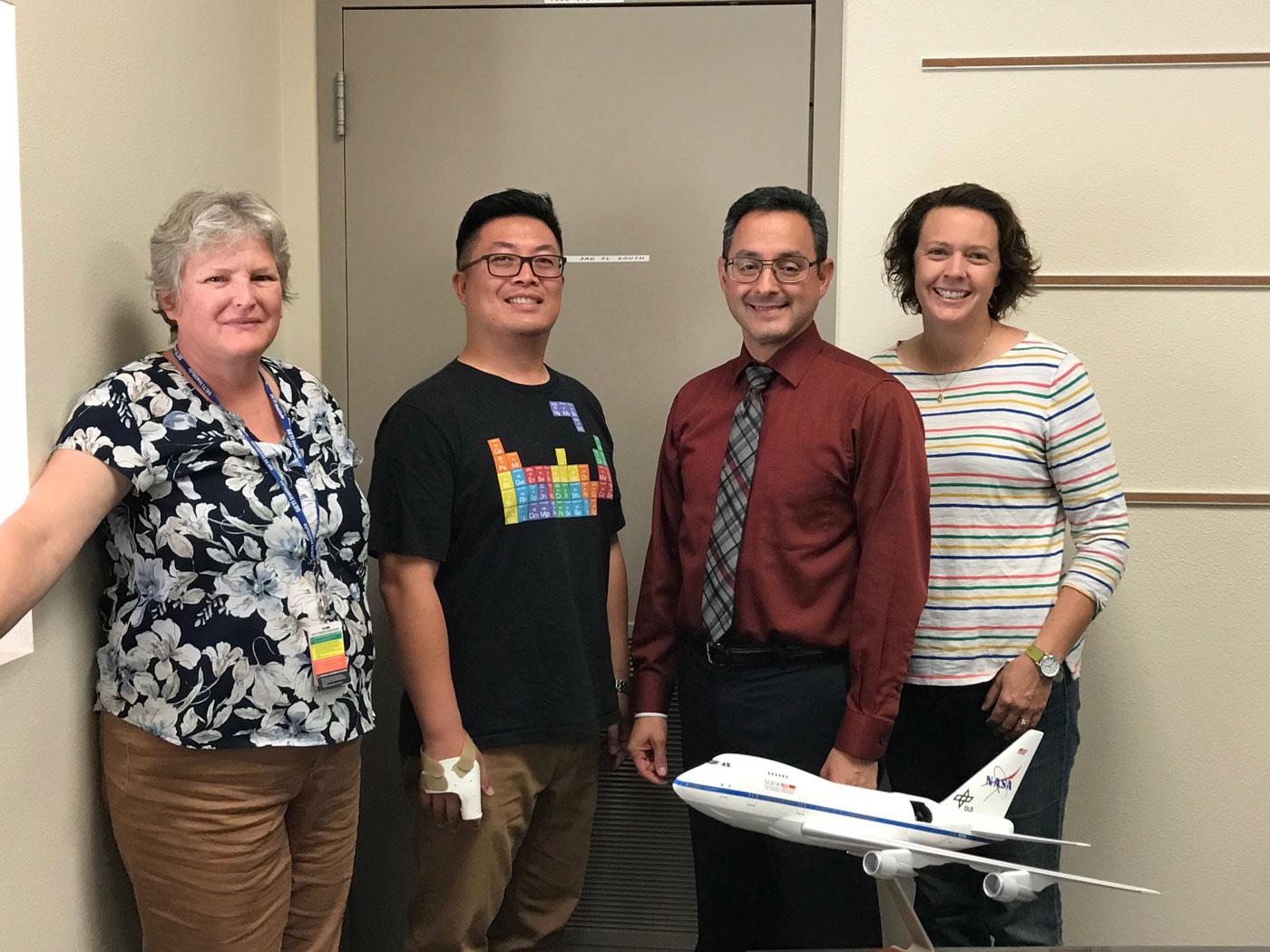
The AAAs were treated to unique meetings with Dr. Hashima Hassan, NASA Discipline Scientist: Astrophysics Data Archives, Ultraviolet and Visible Astrophysics and NASA Astrophysics Division Lead: Education and Communication, and Dr. Kimberley Ennico-Smith, SOFIA Program Scientist. Both were curious about the AAAs’ curriculum implementation plans and their teaching careers, and shared their own career stories.
Guest Observers and their graduate school protégés, Dr. Tommy Wiklind and Skarleth Molino (Catholic University of America), and Dr. Brian Svoboda and Samantha Scibelli (University of Arizona), gave detailed explanations of their research and why infrared is the optimal wavelength for their investigations.

The HAWC+ instrument was mounted on SOFIA’s telescope during both flights. Cooled to an operating temperature of 0.17 degrees C above absolute zero by a specially-designed solid-state refrigerator, the HAWC+ camera makes images in far-infrared polarized light. Those images allow investigations, for example, of the role of interstellar magnetic fields in controlling the rate of star formation. Scientific targets during the two flights included a Bok globule, galaxies, an oxygen-rich Asymptotic Giant Branch (AGB) star, a star that is becoming a red giant for the 2nd (or more) time, interstellar clouds, and star-forming regions. Planet Neptune, a bright far-IR source, was used as a calibration object.
Throughout the flights, the AAAs were tuned into the communications network, captivated by the collaboration required to resolve issues “on the fly.”
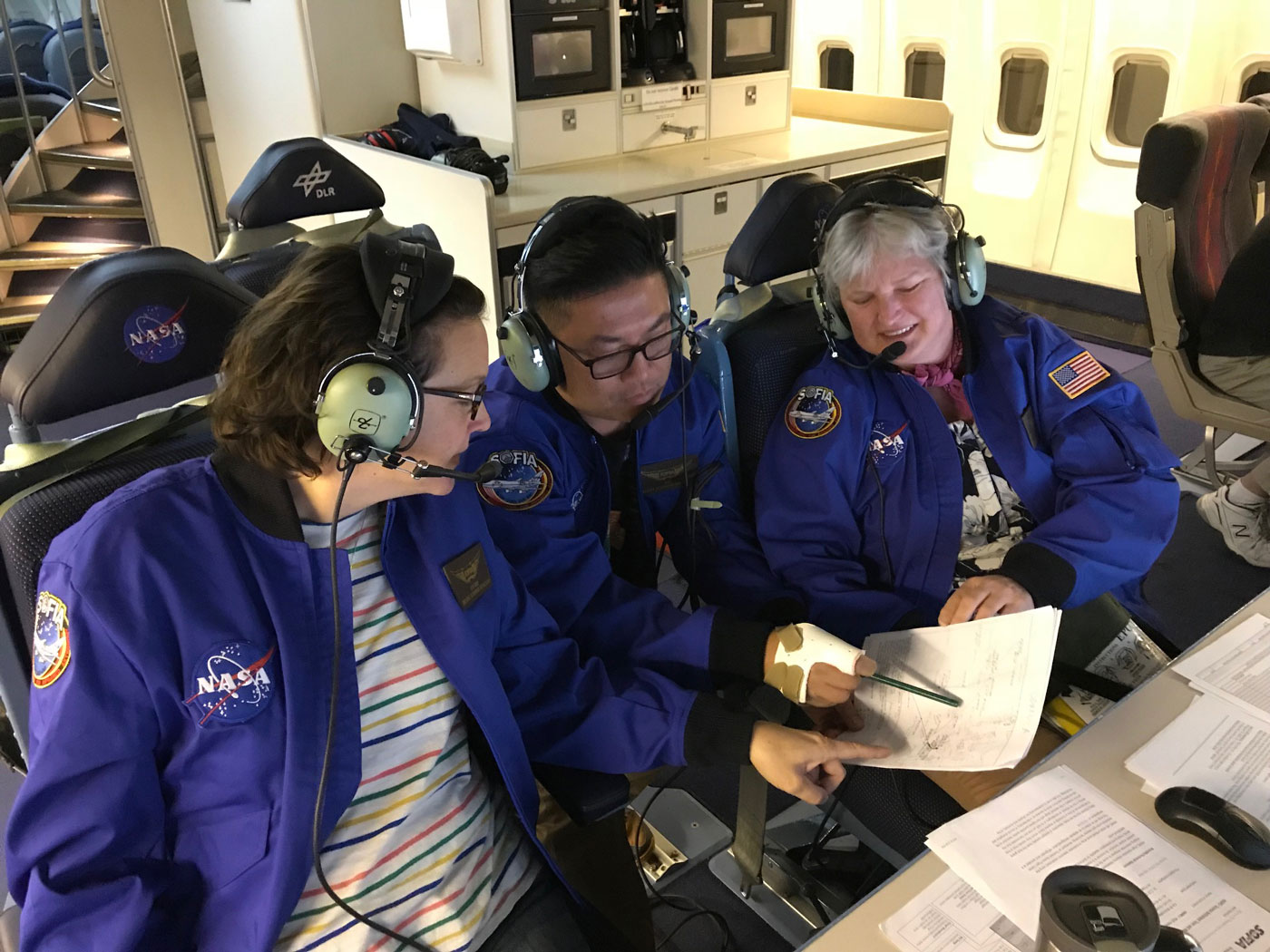
Ms. Short noted, “I was amazed by the level of teamwork evident in every person we met. All saw their jobs as part of something bigger. The opportunity to speak with astronomers and watch them collect data in real time was inspiring. Their excitement is something I want to bring to my students.” Ms. Kunz also observed, “I was so impressed with the interaction of all on the flight. From the flight crew to the telescope operators, no one simply "did their job." They worked together and were concerned with each other's progress. Interest in each other’s successes and struggles creates greater joy and achievement.”

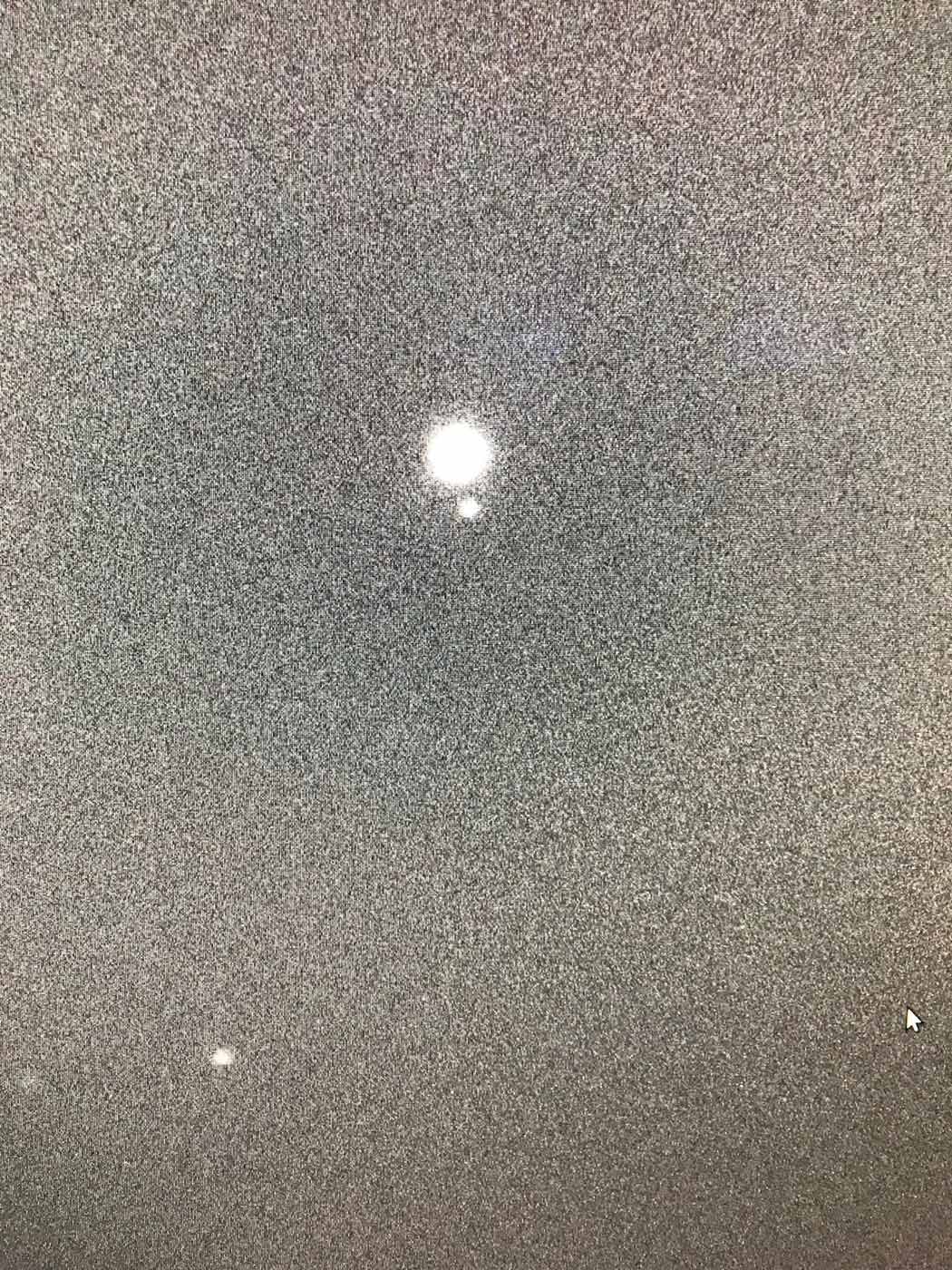
Mr. Wou has already used his experience to inspire his students. “Just yesterday, the students were asking a lot of questions about everything about astronomy and I used what I learned during flight week and showed them my photographs. The level of interest and participation was at the highest level I have ever seen! At the end of the period, many students came up to me and asked me if we can somehow change our class from Physics to Astronomy. Yesterday was a good day for me, a really good day.”
There are two more flight weeks scheduled, with new groups of teachers, for the 2018 season – in total, 15 AAAs will be flying on SOFIA this year and bringing what they learn back to their classrooms.
AAA educator applications for the next Cycle (flights during 2019) are open from September 17 through November 9, 2018. Applications will only be accepted from teachers in districts listed on the application form that have established Memoranda of Understanding with the SETI Institute.
The application form can be found here: https://www.seti.org/aaa.
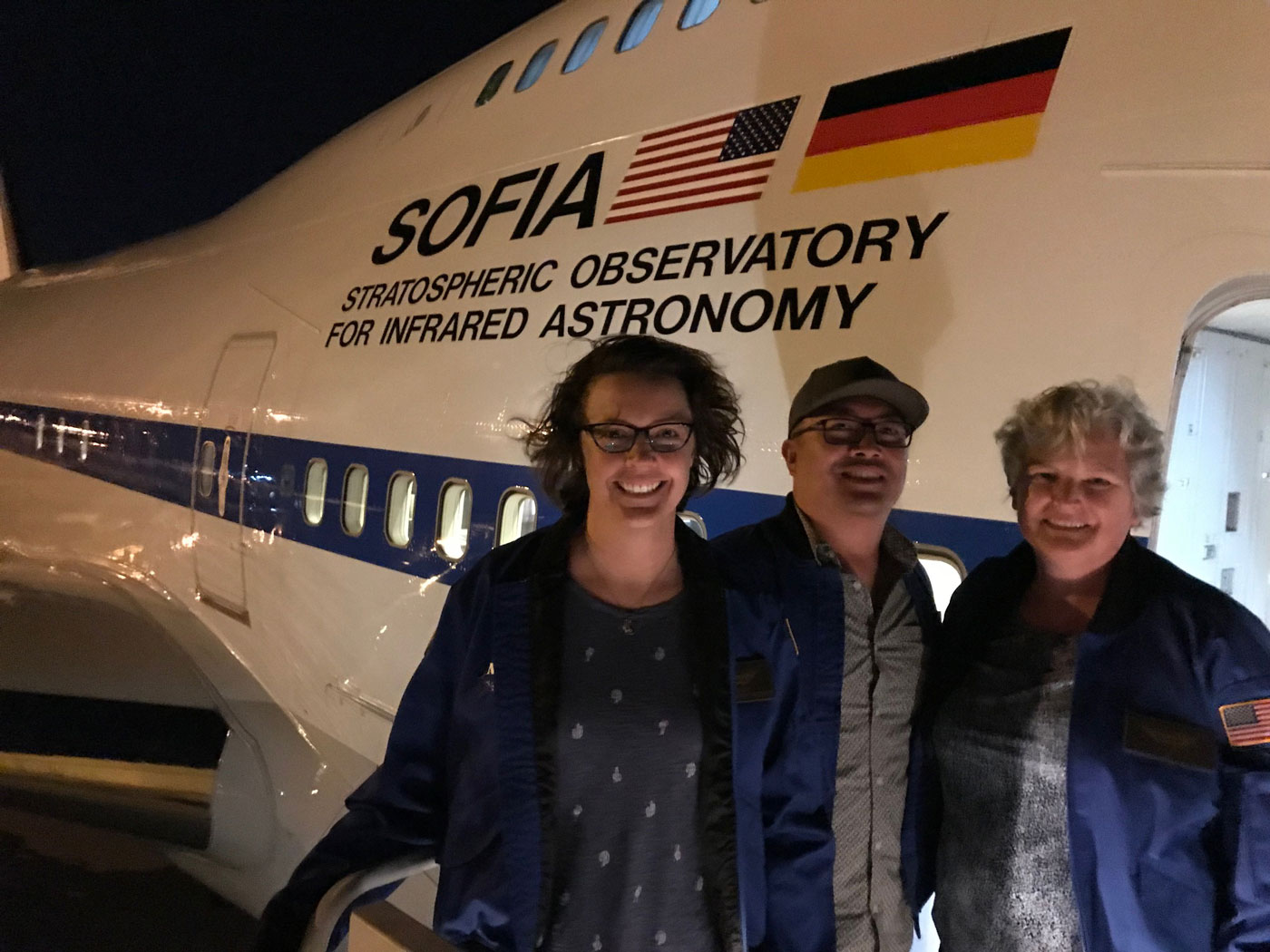
About the Airborne Astronomy Ambassadors Program
The Airborne Astronomy Ambassadors (AAA) program is designed to measurably enhance student STEM achievement and engagement in selected school districts via professional development for high school science teachers. AAA participant professional development consists of training in astrophysics and planetary science content as well as a week-long STEM immersion experience at NASA’s science research aircraft facility in Palmdale, California, including participation in research flights on the Stratospheric Observatory for Infrared Astronomy (SOFIA). Post-flight, AAA program staff then help participant teachers implement a NASA science-oriented electromagnetic spectrum and infrared astronomy curriculum module, developed by the SETI Institute, in their classrooms.
AAA is funded by NASA SMD NNX16AC51A


























